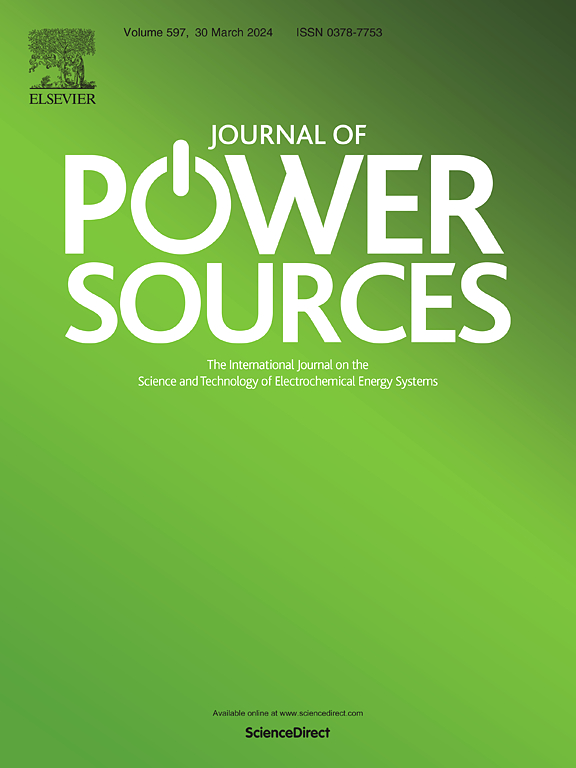锂离子电池正极材料中贵金属的热稳定性:温度范围 100-400 °C
IF 8.1
2区 工程技术
Q1 CHEMISTRY, PHYSICAL
引用次数: 0
摘要
锂在锂离子电池(LIB)中至关重要,是电解质和阴极的主要成分。钴、镍和锰等元素对于电池的高性能、能量密度和稳定性也至关重要。本研究旨在考察报废正极材料(LiNi0.6Mn0.2Co0.2O2)及其有价金属在暴露于 100 至 400 °C 温度后的表现,并将其与未经处理的材料进行比较。传统的分析方法无法可靠地测定锂含量,因此选择了电感耦合等离子体光发射光谱法(ICP-OES)。在进行 ICP-OES 测量时,将样品溶解在不同的溶剂中一段时间,然后测量锂、镍、锰和钴的浓度。根据测量值计算出它们的理论产量。由于在给定温度下进行退火和随后的溶解,这一步骤可被视为电池回收中使用的火法冶金-湿法冶金工艺的第一阶段。这项研究还得到了进一步分析的补充,以监测退火温度对材料特性的影响。研究结果表明,在 400 °C 下退火并在 20% 硝酸中溶解 4 小时的材料,其理论产量在该温度范围内最高。本文章由计算机程序翻译,如有差异,请以英文原文为准。
Thermal stability of valuable metals in lithium-ion battery cathode materials: Temperature range 100–400 °C
Lithium is crucial in lithium-ion batteries (LIBs), serving as a main component of the electrolyte and cathode. Elements such as cobalt, nickel, and manganese are also vital for high performance, energy density, and stability. This study aimed to examine the behaviour of end-of-life cathode material (LiNi0.6Mn0.2Co0.2O2) and its valuable metals after exposure to temperatures between 100 and 400 °C, comparing it with untreated material. The lithium content cannot be reliably determined by conventional analytical methods, so inductively coupled plasma optical emission spectroscopy (ICP-OES) was chosen for this purpose. For ICP-OES measurements, samples were dissolved in different solvents for a specified time, and the concentrations of lithium, nickel, manganese, and cobalt were measured. From the measured values, their theoretical yields were calculated. Due to the annealing at given temperatures and subsequent dissolution, this step can be considered as the first stage of the pyrometallurgical-hydrometallurgical process used in battery recycling. The study was complemented by further analyses to monitor the effect of annealing temperatures on the properties of the material. Based on the results, it was found that the highest theoretical yield in this temperature range was for material annealed at 400 °C and dissolved in 20 % nitric acid for 4 h.
求助全文
通过发布文献求助,成功后即可免费获取论文全文。
去求助
来源期刊

Journal of Power Sources
工程技术-电化学
CiteScore
16.40
自引率
6.50%
发文量
1249
审稿时长
36 days
期刊介绍:
The Journal of Power Sources is a publication catering to researchers and technologists interested in various aspects of the science, technology, and applications of electrochemical power sources. It covers original research and reviews on primary and secondary batteries, fuel cells, supercapacitors, and photo-electrochemical cells.
Topics considered include the research, development and applications of nanomaterials and novel componentry for these devices. Examples of applications of these electrochemical power sources include:
• Portable electronics
• Electric and Hybrid Electric Vehicles
• Uninterruptible Power Supply (UPS) systems
• Storage of renewable energy
• Satellites and deep space probes
• Boats and ships, drones and aircrafts
• Wearable energy storage systems
 求助内容:
求助内容: 应助结果提醒方式:
应助结果提醒方式:


